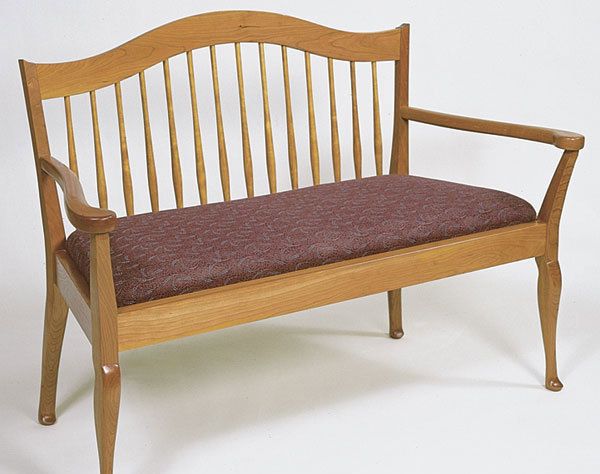A Short History of Benches
Learn how benches have evolved from simple forms of seating to today's examples.

The terms “bench” and “form” can be used interchangeably to refer to backless and elongated wooden seating. Originally a bench may have been freestanding and movable, whereas a form referred to a bench fixed to the wall. Furthermore, the term “bench” has acquired the additional meaning of a work surface, such as a cabinetmaker’s workbench.
The bench was the common seating form in the days when chairs were reserved for the most important people (hence the term “chairman”). Early types were very simple, consisting of a plank supported by solid ends connected by brackets or a stretcher.
Later developments included benches with joined legs, similar to an elongated joint stool. At a certain point the legs were extended up past the seat to form sides and a back. This new form, thought to have been developed for houses lacking the linenfold frame-and-paneling that was common as a wall covering, became known as a settle. In addition to being provided with ends and a back, the distinctive characteristic of a settle, apart from being unupholstered, is often its linenfold paneling. Like benches, settles may also be freestanding or attached to a wall.
Both benches and settles may also be thought of as extensions of chests, which were undoubtedly used for seating in the days before chairs became common. Both planked chests and frame-and-paneled chests are easily turned into settles by the simple extension upwards of either the sides or the legs.
Whether supported by solid ends or individual legs, benches may be made with squared or splayed supports. Solid ends are frequently given various ogee-shaped profiles. Individual legs may be square, chamfered, or turned. While the elongation which separates a bench from a stool is generally intended to provide seating for more than one person, a notable exception is the piano bench, which sometimes differs from other benches in also often having an upholstered seat.
At the other extreme are benches that are so long as to require additional support between the ends, like many cane-seated examples made in the 18th century.
Graham Blackburn is a furniture maker, author, and illustrator, and publisher of Blackburn Books (www.blackburnbooks.com) in Bearsville, N.Y.







Log in or create an account to post a comment.
Sign up Log in